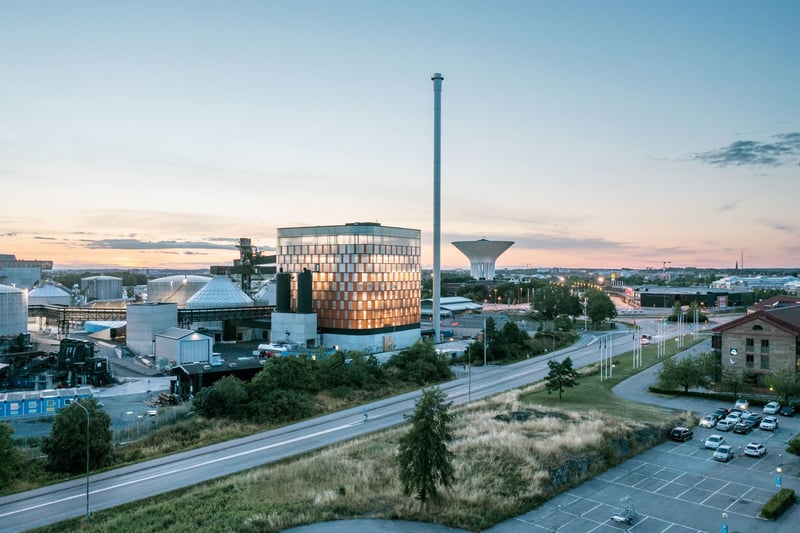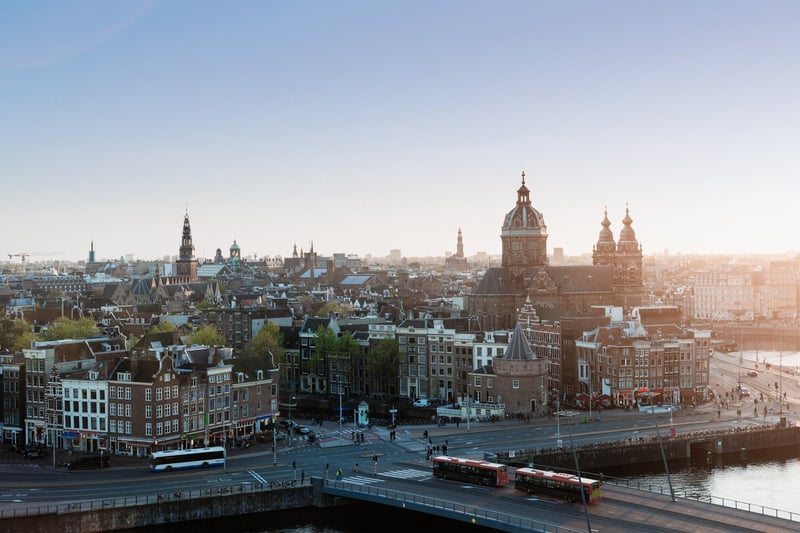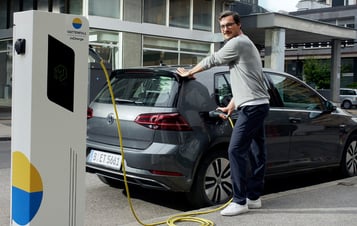
Helping our heating system break free from fossil fuels
Our heating system is trapped in an addiction to fossil fuels. Discover how we’re helping it to break free by transforming our heating with the help of algae and recycled heat.
Heating cities instead of the planet

How we heat our homes impacts not only our comfort at home, but our planet. That’s why Vattenfall aims to transform home heating.
In the UK, the heating sector currently accounts for almost a third of the country's annual carbon footprint. One reason for this is the fact that around 85% of UK homes have a gas boiler, which has resulted in 92 million tonnes of carbon dioxide being produced each year. Making progress on decarbonising heat in homes is a priority if the UK is to stay on track to meet its net zero targets.
Vattenfall is working with UK cities to help them break free from their reliance on fossil fuels. We’re developing low carbon heat networks to serve homes and businesses with heating and hot water in Bristol, London and Midlothian, on the outskirts of Edinburgh.
Heat networks are a more efficient and low carbon way of providing heating and hot water to homes and businesses at scale, especially when the heat comes from renewable and low carbon sources. The goal for our networks in the UK is for our heat sources to be low carbon and where possible, reuse heat that is readily available in towns and cities, such as from the air, water or even energy from waste. By 2030, the plan is for our heat networks to serve over 20,000 customers in the UK – a large first step towards breaking cities free from fossil fuels.
How a new heat plant is lowering a city’s climate footprint

Vattenfall has inaugurated a new biofuel heat plant that will halve the climate footprint for the around 170,000 Uppsala residents, who are connected to Vattenfall’s district heating grid in the Swedish city. An impressive number for sure, but what’s also impressive is the fact that this plant will create a significant reduction in carbon dioxide and fossil carbon emissions compared to when peat and other fossil fuels were used.
The plant is an essential part, when it comes to phasing out fossil fuels from the heat production in Uppsala.
Carpe Futurum is considered a milestone in Vattenfall's work to phase out fossil fuels in its Swedish heat operation by 2025 and to reach net zero emissions within the entire company by 2040. The facility was inaugurated in 2022 and is a major step to replace peat with new fossil-free heat production that is based entirely on renewable and recycled fuels.
Homes heated by algae

Can algae heat homes? In Gustavsberg in Sweden, this became a reality in spring 2022 through Vattenfall’s SamEnergi service. In a partnership with AstaReal, Vattenfall supplies Gustavsberg residents with more than 20 per cent of their heating requirements through a solution that uses excess heat that comes from AstaReal’s algae cultivation. It’s a partnership that in an innovative way provides 2,500 new apartments with this algae heating solution.
By installing reversible heat pumps at AstaReal’s plant, it is possible to recover excess heat from the algae production process. This means that more than 15 million kilowatt hours of heat per year will be recovered and reused in Gustavsberg.
Revolutionising home heating – one pump at a time

High-temperature heat pumps can change the trajectory of home heating in the Netherlands – a country that’s highly dependent on affordable natural gas.
The high-temperature heat pumps not only have the possibility to break the homeowners and tenants free from gas-fired central boilers that can range up to and around approximately EUR 25,000, they’re also normally energy-cost neutral and makes the resident independent of the rising gas price.
“A single-family home can be made natural gas-free in two days with this new, innovative heat pump. To heat these homes with traditional heat pumps that supply low or medium temperature heat, expensive preparatory measures are required. In many cases, this means installing underfloor heating and/or extensive post-insulation of the home. Vattenfall sees that these costs, soon around EUR 25,000, the 'hassle' of the work and the long lead time are a major obstacle for homeowners to make the step to fully electric heating,” says Cindy Kroon, Head of Customers & Solutions Vattenfall in the Netherlands.
Want to know more?
Find out more about this topic here.
- Vattenfall launches ambitious plan to heat London’s buildings without fossil fuels
- Vattenfall inaugurates new heat plant Carpe Futurum in Uppsala, Sweden
- Vattenfall and AstaReal sign comprehensive energy contract: Excess heat from algae cultivation will heat households in Gustavsberg
- Vattenfall’s new heat pump provides homeowners an alternative to gas



